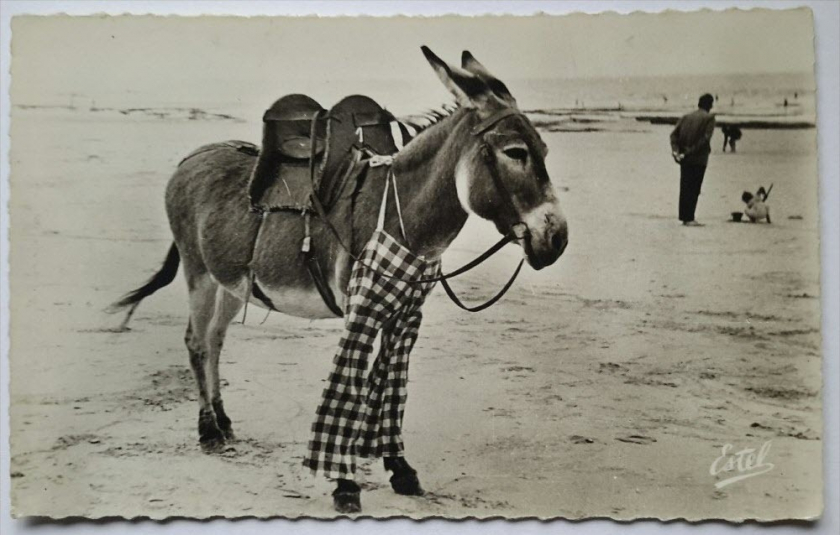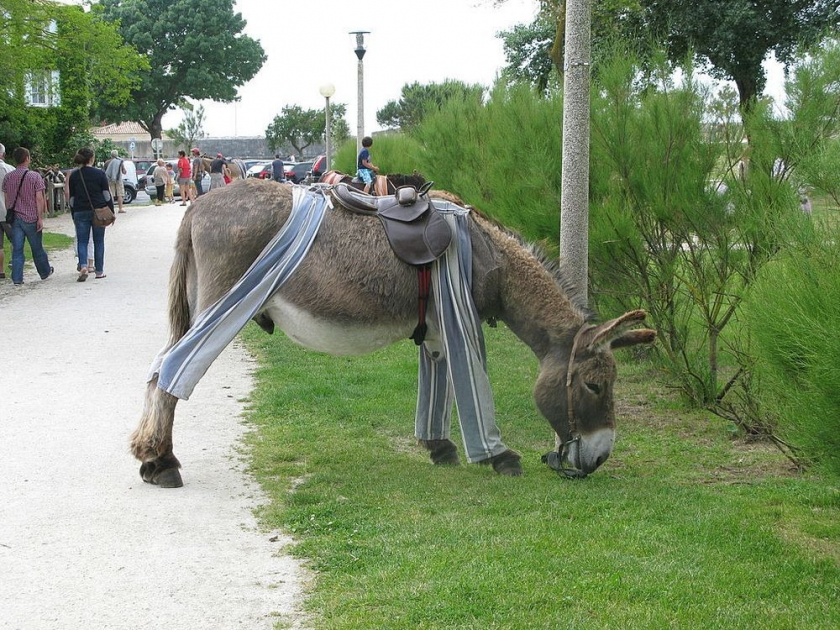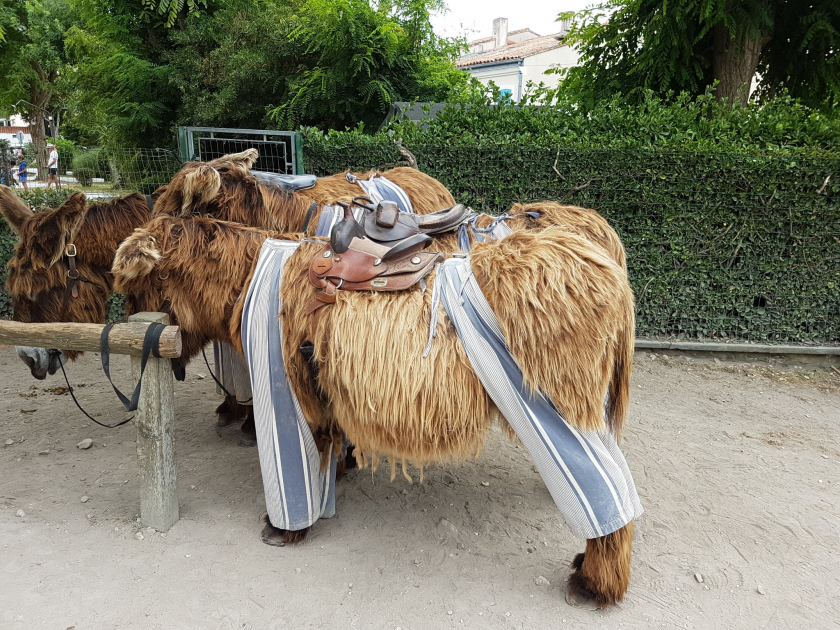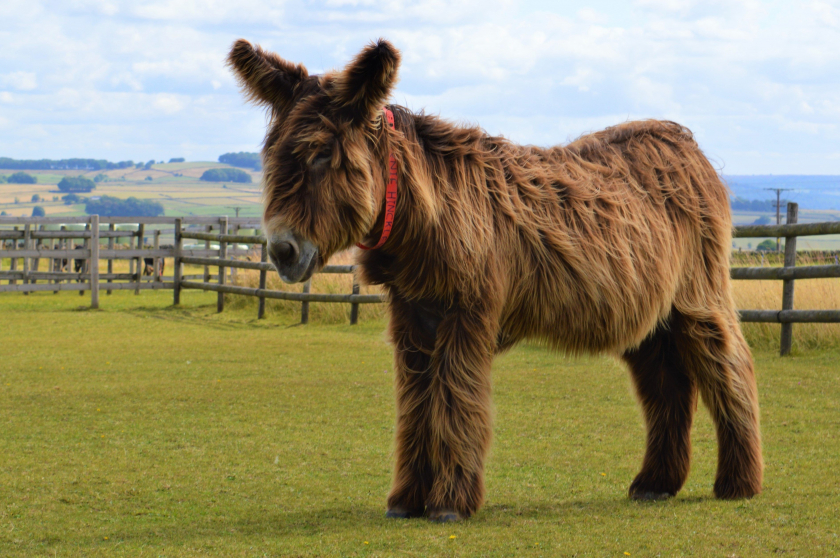The island of Île-de-Ré (or Rhea) is located off the west coast of France near La Rochelle. It is known for its gently sloping sandy beaches, cool waters and gentle breezes, making it a great place for family and friends to relax.

A Poitou donkey wearing pants on an old postcard.
On Rhea Island, visitors can see large, bushy-haired donkeys with half-closed eyes. Notably, the islanders dress them in long, green striped pants like pajamas. It is known that these Poitou donkeys have lived with the locals for a long time.
The Poitou is considered one of the largest and most productive donkey breeds in the world. They are much larger than regular donkeys. The most distinctive feature of the Poitou is its shaggy coat called a cadanette, which is braided into long braids.
Around 1900, the inhabitants of Rhea Island imported the donkeys to transport salt from the Charente Maritime salt pans to warehouses. They dressed the Poitou donkeys in long trousers each day to protect them from insect attacks.

Poitou donkeys are dressed in trousers to protect against insects.

The donkey in pants became a symbol of the Rhea Islands.

Tourists enjoy visiting the donkey wearing pants.
Their trousers were made of curtain fabric, with an old vichy pattern in grey or red stripes. They became an integral part of the Île de Ré community and accompanied the daily lives of its residents. Over time, the donkeys became known as “Anes en Culotte” or “donkeys in underpants”.
Today, donkeys on Île-de-Ré are no longer used on the salt flats. As a result, some donkeys do not wear pants. However, most people still keep the tradition and dress their donkeys in pants. This also helps to make the island more attractive to tourists.

The Poitou donkey is stronger and larger than normal donkeys.

The Poitou donkey's coat is long and shaggy.
The Poitou donkey was once the most sought after donkey in all of Europe. By the mid-20th century, up to 30,000 donkeys were bred annually in the Poitou region and exported around the world. During World War II, the demand for donkeys decreased and the market collapsed due to the introduction of machinery. Both mule and donkey populations declined dramatically. In 1977, there were only 44 Poitou donkeys left in the world. Thanks to conservation efforts in the late 20th century, there were more than 450 Poitou donkeys in the world as of 2005.



































